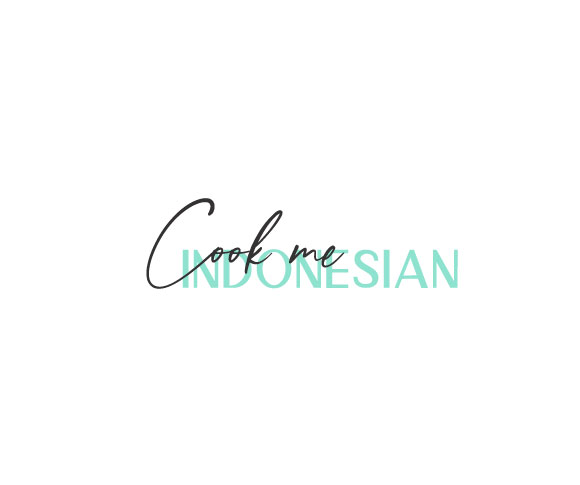Over the past decade or so, Thai food has made a name for itself in the culinary world. Today, most city-dwellers will be familiar with popular Thai dishes such as tom yam, green curry, and pad thai. Thai food is represented in virtually all cooking competitions in the world, such as Masterchef.
Indonesian cuisine, on the other hand, isn’t quite as popular. For some reason, the cuisine hasn’t really spread beyond Indonesia’s immediate neighbours such as Malaysia, Singapore, and Brunei. You can also find a good selection of Indonesian food in the Netherlands, because of the history of Dutch rule in Indonesia.
Since Thailand and Indonesia are both countries in Southeast Asia, many who have never tried Indonesian food often ask: “Is Indonesian food similar to Thai food?”
The similarities
Thai and Indonesian cuisines are similar in many ways. Both countries are situated in tropical Southeast Asia, which means they are able to grow similar types of produce. Herbs such as lemongrass, galangal, kaffir lime, tamarind, and basil are used extensively in both cuisines, along with coriander, garlic, and spring onions.
Culturally, too, there are similarities – both countries have historically been influenced by India and China, and this is reflected in both cuisines, as well.
- Rice as a staple
Rice is a staple in both cuisines, excluding parts of Eastern Indonesia such as Papua, which uses sago. Aside from rice, tubers such as cassava or sweet potato are often used as a rice substitute.
- Spicy food!
The food of both countries is outrageously spicy, sometimes unbearably so, for the rest of the world. Both incorporate chillies into their dishes; but as far as I know, Thai dishes are in general spicier compared to Indonesian dishes. Indonesian food, on the other hand, may or may not be spicy, with many soups and fried dishes that don’t contain chillies. But there will always be sambal (chilli paste) on the side, as a condiment, to add the spicy punch that Indonesians love. Also, Thais tend to use a lot of bird’s eye chillies, which taste very sharp, whereas Indonesians usually use a mix of big chillies and bird’s eye chillies within each dish.
- Shrimp paste
Fermented shrimp paste (terasi) is uniquely Southeast Asian. It has a strong, pungent taste and smell, and makes the uninitiated recoil in horror. Both Thai and Indonesian cuisines use this, but I believe it’s more prevalent in Southern Thailand than in Northern Thailand.
- Curries
Both Thailand and Indonesia have a range of curries. In Southeast Asian cuisine, this generally means a spice paste that’s cooked in coconut milk to form a gravy, unlike Indian curries, which may or may not include coconut milk. Thailand is famous for its green and red curries, and Indonesia has dishes like gulai, opor, and kalio.
- Cooking methods
Being tropical countries, cooking methods in Thailand and Indonesia are very similar. Meats are often fried, charcoal-grilled, or cooked in soups and curries. Vegetables are often made into salads, or stir-fried – the latter probably because of Chinese influence. For example, cah kangkung is strikingly similar to Thai stir-fried morning glory. Ingredients such as raw mangoes are also often used in salads, such as Thai mango salad and Indonesia’s green mango rujak. The desserts, too, are often heavy on ingredients like coconut milk, fresh fruit, and sometimes, glutinous or sticky rice.
The differences
With all those similarities, some of you who’ve tried both cuisines may be wondering, why on earth do they taste so different?
- Fish sauce
Fish sauce is very, very common in Thai cuisine, but is practically unheard of in Indonesian cooking, except in certain parts of Indonesia such as Sulawesi. Fish sauce is partly responsible for giving Thai food that distinctive flavour, which Indonesian food doesn’t have. On the other hand, roasted shrimp paste (terasi) tends to be more common in Indonesian cooking.
- Use of shallots
Although shallots are common to both cuisines, they are used very differently. Thai cuisine generally uses shallots far less frequently compared to Indonesian cuisine, as far as I can tell. And when the Thais do use it, it’s often semi-cooked, almost as if it’s a garnish. However, in Indonesian food, shallots are absolutely critical. They often form an integral part of bumbu, or Indonesian spice paste. Shallots are often sautéed until they soften (whether in a paste or on their own), giving Indonesian dishes a flavour that’s mellower compared to Thai food.
- Temperature of cooking
When it comes to stir-fried dishes such as fried noodles, I’ve noticed that Thai food tends to be cooked on much higher heat compared to Indonesian food. This tends to give it the charred, bright flavour that’s also found in South Chinese food. In Indonesia, the spice paste is often still semi-liquid when stir-fried, and the stir-frying process will continue until the dish becomes dry. In fried noodles or rice, this makes the dish slightly denser, with a glaze over the rice or noodles – such as in Indonesian nasi goreng.
- Cloves, cinnamon, cardamom
The use of spices such as cloves, cinnamon and cardamom is more extensive in Indonesian cooking compared to Thai cooking. This could partly be due to Indian and Arab influences in Indonesia, especially in coastal areas near important ports. Pacri nanas, for example, uses all these spices — and they’re often also found in clear, light soups.
- Kecap manis, or, Indonesian sweet soy sauce
Although Thai cooking uses soy sauce, it’s usually Chinese light soy sauce or dark soy sauce. Indonesians hardly use these, and instead use the uniquely Indonesian sweet soy sauce, or kecap manis. This is a thick soy sauce made with caramelized palm sugar, and is used extensively in cooking – especially in Javanese cuisine. This lends a mellow, sweet, rich flavour to the dishes that sometimes may be too sweet for some people, and heavenly to others. Thai food, too, has its own version of sweet soy sauce, but most of the common Thai dishes don’t use it.




